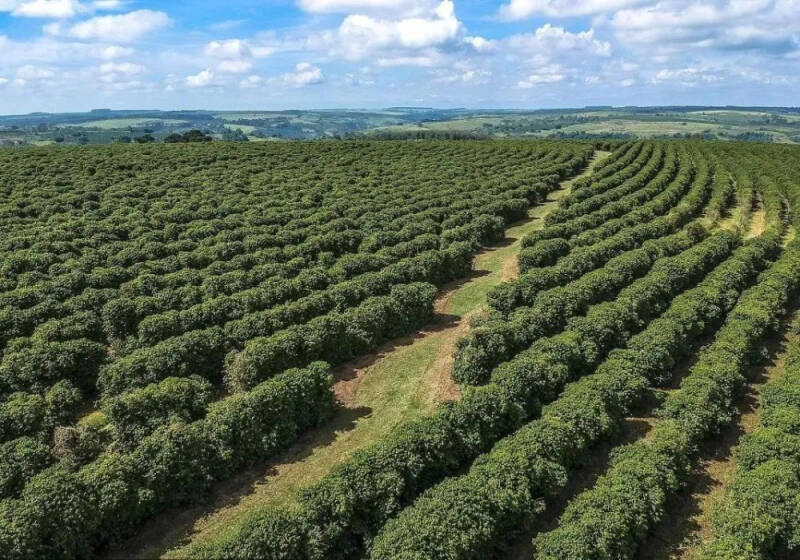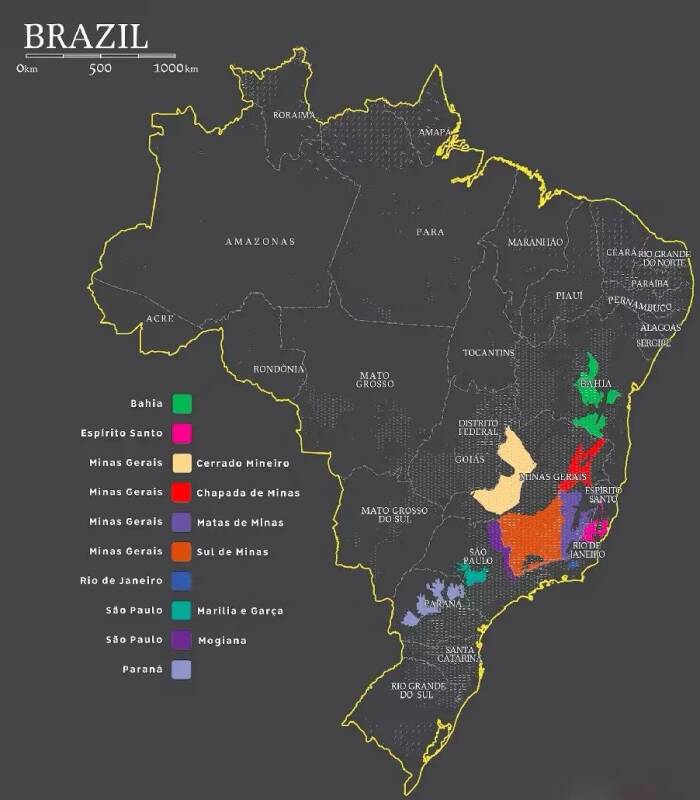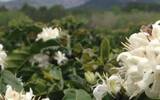Introduction of Yellow Bourbon Coffee beans in Queen's Manor, Mogiana, Sao Paulo, Brazil
Brazilian coffee plays an important role in the global coffee market, all because Brazil says that the world's largest coffee producer and exporter accounts for 1/3 of the world's coffee exports. Mainly grow Arabica and Robusta varieties (also known locally as Cornelon Conilon) coffee.
Coffee cultivation in Brazil
Brazil is the largest country in South America, bordering ten countries, including Uruguay, Peru, Bolivia and Colombia. Brazilian coffee can become the largest coffee producing country because of its superior geographical conditions and climatic environment. Brazil is mainly tropical climate, and some areas are tropical rain forest climate and savanna climate. Coffee is mainly grown in southern Brazil, where temperatures range from 16 to 19 ℃

Three types of soils are mainly distributed in Brazil, namely, sedimentary lithic soil, red-yellow soil and brown clay, which are rich in organic matter and minerals, good drainage, rich precipitation, fertile soil and many rivers. these conditions are very suitable for the growth of coffee.
Morgiana producing area
There are 26 states in Brazil, of which 17 produce coffee. Among the 17 states, Parana, Sao Paulo, Miraz Gerais and Esp í rito Santo account for 80% of the total output, while Milasquillas has the highest production, accounting for 30% of the total production. Brazil's Arabica accounts for 80% of total production and the remaining 20% is Robusta. Among them, the main planting has been bourbon, Kaduai, iron pickup, New World and so on, and the harvest period is from May to September.

There are also many famous sub-producing areas in these states, such as the Syrador producing area in Minas Gerais, where the entry series of Qianjie Coffee has coffee beans from the Brazilian Hillado producing area. On the other hand, Morgiana is a sub-producing area of the state of Sao Paulo, which belongs to one of the areas with higher elevations and produces high-quality Brazilian coffee. There are many growing families here, and modern technology and mixed mountain coffee growing culture have created high-quality raw coffee beans.
Yellow bourbon
Bourbon and Ironka are the oldest coffee varieties in existence. Bourbon has obvious characteristics on coffee trees. The nodes of bourbon leaves are relatively close. Coffee berries will be more round and shorter than Ironka. And ripe berries will have yellow or orange (pink) due to variants. Bourbon is almost all round beans, compared with tin card, bourbon beans are smaller and mature later, but bourbon is higher in yield than tin pickup. Bourbon beans grown at high altitudes have higher density, better sweetness and bright sour taste. Although it is an ancient and excellent variety as well as iron pickup, bourbon has better resistance to rust leaf disease than iron pickup.
From flowering to ripening, the common bourbon will gradually change from green to yellowish, red, and finally to fully mature crimson. This change of fresh coffee fruit is what we often call red bourbon. The yellow bourbon is a unique bourbon variety in the Brazilian state of Sao Paulo, mainly because it does not turn red, but appears orange, so it is called "yellow bourbon". However, its yield is very low and it is not resistant to wind and rain, so it has not been widely planted. Yellow bourbon, grown at high altitudes, contains a lot of fructose, so it can show a sweet and juicy coffee flavor.
Half-day sun
Half-sun is an original treatment in Brazil. in the past, Brazil usually used sun treatment, but there is more rainfall in Brazil, and it is easy to encounter rainy weather during the two-to three-week sun exposure, making coffee mildew. Therefore, a half-sun method has been developed to shorten the processing time.
Half-sun treatment of Fakisha is a direct method of sun exposure and water washing. The exocarp, pulp and part of the pectin will be removed before the sun exposure, and some of the pectin will be retained for sun treatment, which can shorten the sun exposure time. The coffee treated in this way is sweeter, the aroma will be magnified, and the mellow will be stronger.
Front Street Coffee Brazilian Queen Manor Yellow bourbon Coffee Bean production area: Morgiana Manor / processing Plant: Queen Manor Fazenda Rainha altitude: 1400-1950 m varieties: yellow bourbon treatment: half-sun flavor: sugarcane black tea nut chocolate
Qianjie Coffee also has yellow bourbon beans from the Queen's Manor of Brazil, from the Morgiana producing area in the state of Sao Paulo. The front street will use a KONO filter cup, the proportion of 1:15 to cook, the entrance will have a sweet fruit, with sugar cane, black tea, chocolate and nutty flavor, weak, clean bitterness, smooth and delicate taste.
Important Notice :
前街咖啡 FrontStreet Coffee has moved to new addredd:
FrontStreet Coffee Address: 315,Donghua East Road,GuangZhou
Tel:020 38364473
- Prev

No order for Chinese New year? Lucky employees are "happy" too early!
▲ Click to follow | Daily boutique Coffee Culture Magazine Coffee Workshop Spring Festival has quietly arrived, in this family get together to celebrate the New year, many industries have ushered in a short rest and relaxation, and baristas may be looking forward to a rare break. But in this seemingly deserted holiday
- Next

Brazil's coffee bean production is unstable, and ship delays in Santos port slow coffee exports
Recently, the Brazilian Exporters Committee Cecafe recently released a statistical report. Brazil exported 3,961,000 bags of 60 kilograms of coffee in January 2024, a record for the first month of the calendar year and a 39 percent increase compared with the same period last year, the report said. Foreign exchange earnings rose by 3 per cent
Related
- What effect does Italian American coffee with filter paper have? Will coffee taste better if it is put on filter paper at the bottom of the powder bowl?
- What is the color difference in coffee beans? What are the characteristics of honey processed coffee beans? Why are the anaerobically treated coffee beans uneven in color?
- How does novice Xiaobai quickly get started and make coffee? Newbies learn to make coffee by hand and share the specific steps and process process!
- Costa tea has a shelf life of 100 years?! Expert: Unable to verify
- It's a huge uproar! American milk addition was rejected by Manner employees?!
- Mocha pot coffee bean recommendations| How fine and how much powder should be used for grinding? What parameter ratios do I need to use to make milk with Mocha pot coffee?
- What are the characteristics of the world's top ten coffee beans treated with Costa Rica honey? How to make black honey kadura from Tarazhu Pilon Processing Plant taste good?
- How to make deep-roasted coffee? What grinding water temperature does authentic Jamaica Blue Mountain No. 1 coffee use to brew it well?
- Selected high-grade rose summer coffee flavor tasting guide Why Panama rose summer has the aroma of flowers and fruits
- What equipment does a novice Xiaobai need to buy to learn to make coffee? Filter cup electronic scale bean grinder manual flushing pot purchase guide

